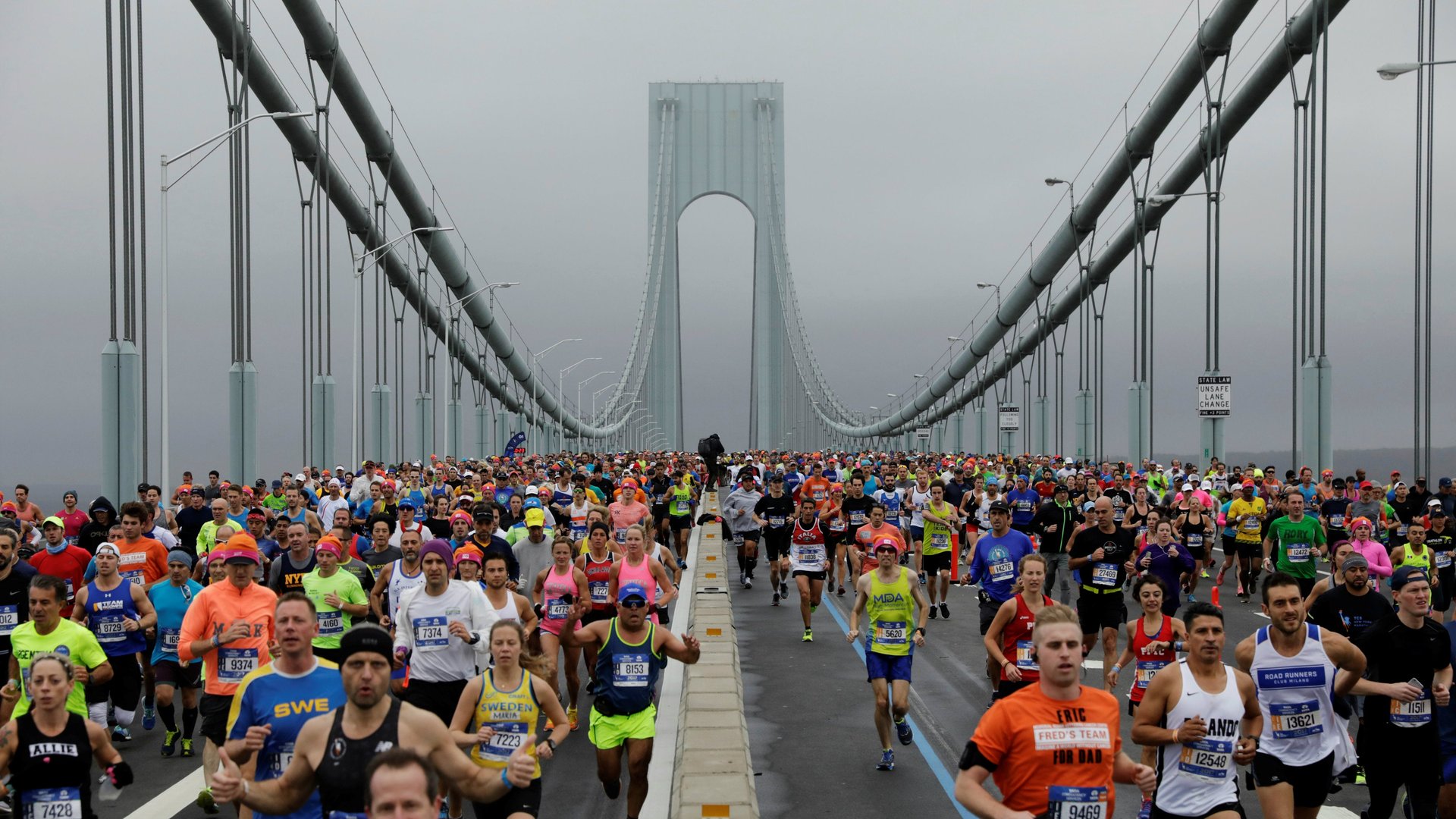The best way to feel like a New Yorker is to run the New York City Marathon
I genuinely hope that my daughters do not become marathon runners. It’s terrible on the knees, takes up a lot of time and can be quite solitary.


I genuinely hope that my daughters do not become marathon runners. It’s terrible on the knees, takes up a lot of time and can be quite solitary.
But I do hope they someday run a big city marathon. Not to get in shape, or to join the ranks of over-achievers, but to be part of a massive, wildly diverse community on a day of non-stop celebration.
I lived in New York City for 16 years. During that time, terrorists took down two towers, Hurricane Sandy leveled entire parts of the city, and the US went to war twice. Through those tragedies, New Yorkers—for all their rush and bustle, their unforgiving directness and incorrigible impatience—revealed themselves. They fought in lines to give blood, hustled to volunteer, and strained to help survivors. Their hardness transformed to an efficacious and steely determination to help. I saw a community I had never seen before.
But those events were deeply sad. They aged us, with all their hate and fear and ugliness. Over time, they hardened us too.
In those 16 years I ran the New York City marathon twice. My performance in neither race was fast or graceful. But in both, I felt that same sense of community, not in tragedy, but in raucous celebration.
Because aside from being a really, really long race—26.2 miles/40 kilometers—the marathon flips the city on its head. It happens amidst skyscrapers and densely packed streets, in neighborhoods where millions of people live literally on top of each other, but often interact very little. Suddenly, those who barely look at each other are pouring onto the streets to cheer their hearts out for people they don’t know.
Runners traverse the five boroughs, starting in Staten Island and weaving through Brooklyn, Queens, the Bronx, and then Manhattan. Every neighborhood spills out onto the sidewalks in all its glorious diversity. The Orthodox Jews congregate on opposite sides of the street, watching quietly. The hipsters hang off their fire escapes. Children dance.
You foot it across five of the city’s bridges. As you descend onto First Avenue from the 59th Street Bridge, the din of cheering makes you feel, for a fleeting moment, like Beyoncé. It’s for you—for your work, and determination. Some write their names on their jerseys, prompting the crowd to call out their names.
There are people from 100 countries and you meet a lot of them along the way, even if just with a smile and a word of encouragement. The support is unconditional and 360 degrees: from the runners on the course to the supporters on sidelines to the 12,00 volunteers handing you water or food. Wear the tinfoil-like cape you get at the finish line to keep you warm, and total strangers on the subway home will hoot and holler.
I did not have a love affair with New York City, the way so many people do. It was too busy, too devoid of nature and too focused on work. But every year on marathon day, I felt like the beating heart of New York City. When I ran it, I felt like I had both conquered the world and discovered my own city.
My kids will be way different than me, as they should be. They may be slickers or country bumpkins, they may live in Europe, or Asia, or perhaps the US. We live in London now, and maybe they will do the London marathon and feel the same love I felt for New York City.
If they do it, they will do something they no doubt once thought impossible. They will be cheered like rock stars and heroes, just for putting one foot in front of the other. They will feel very big and very small, and likely, very tired. And they will be an epic part of a great city.